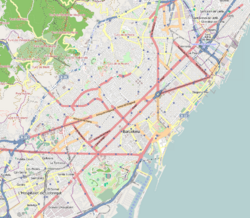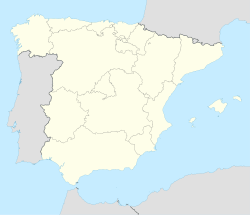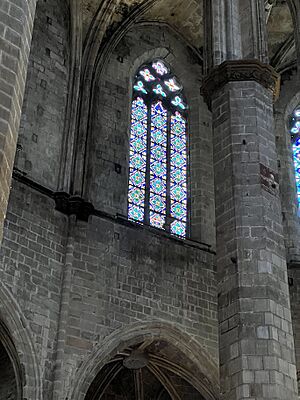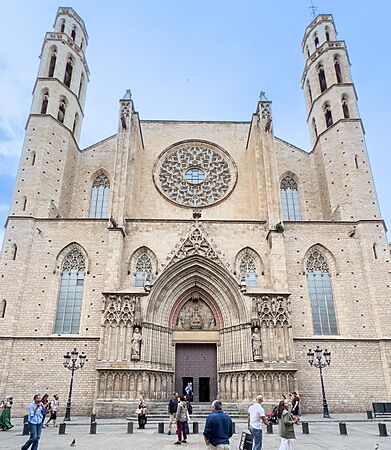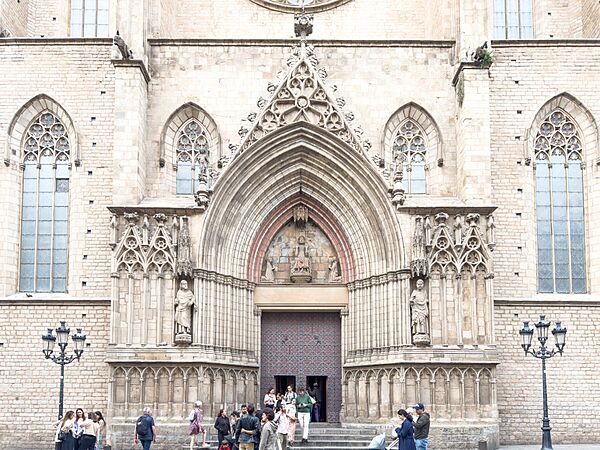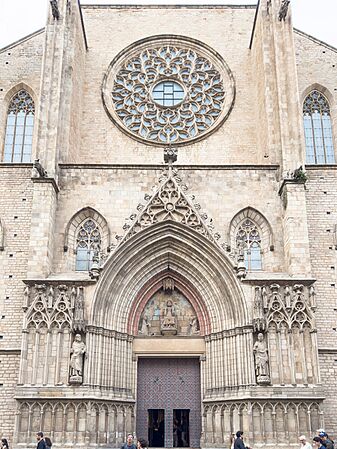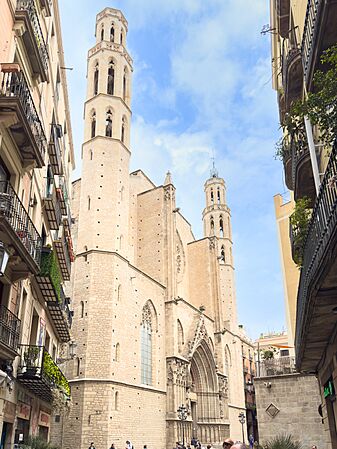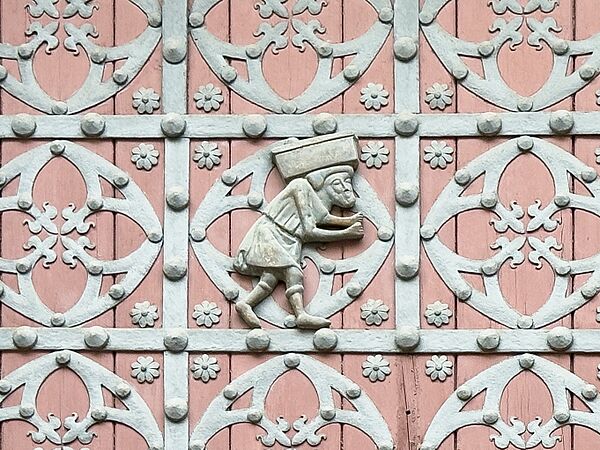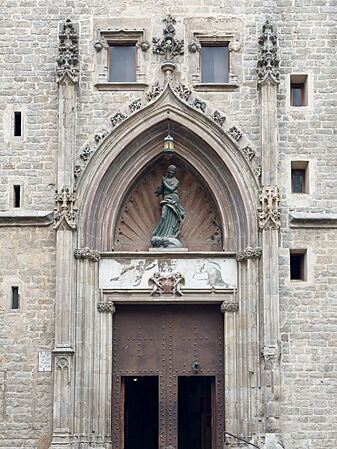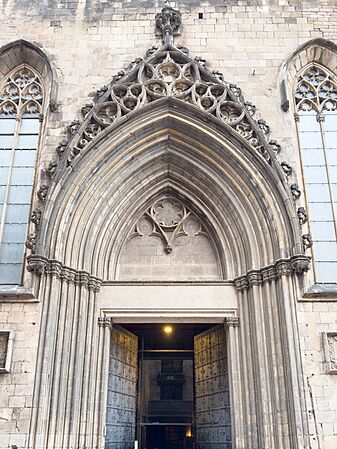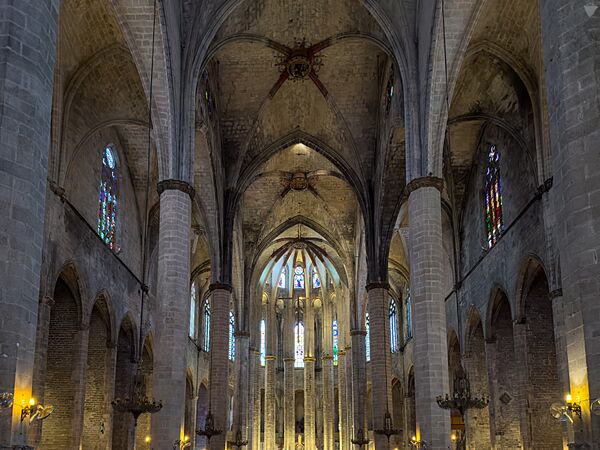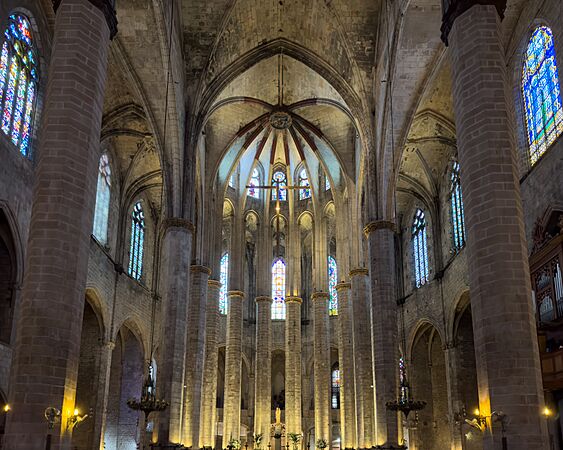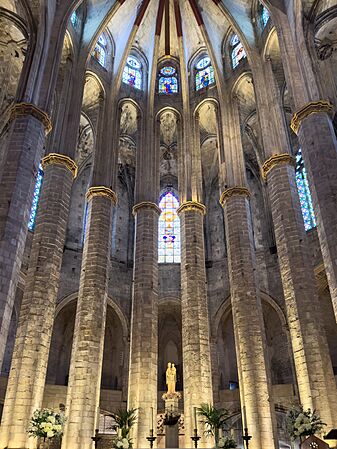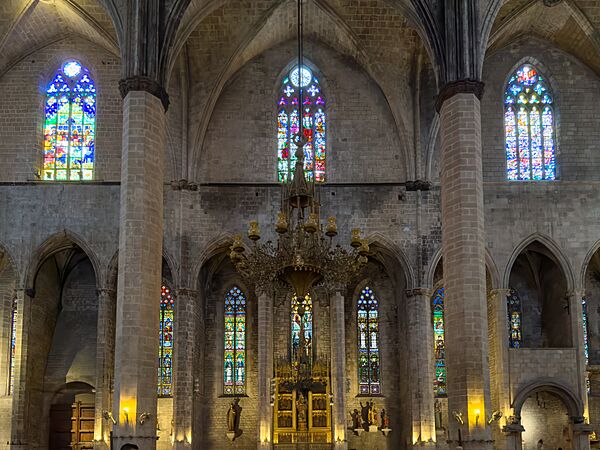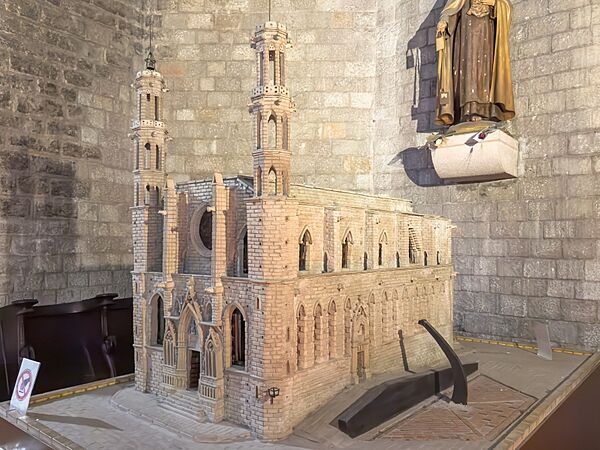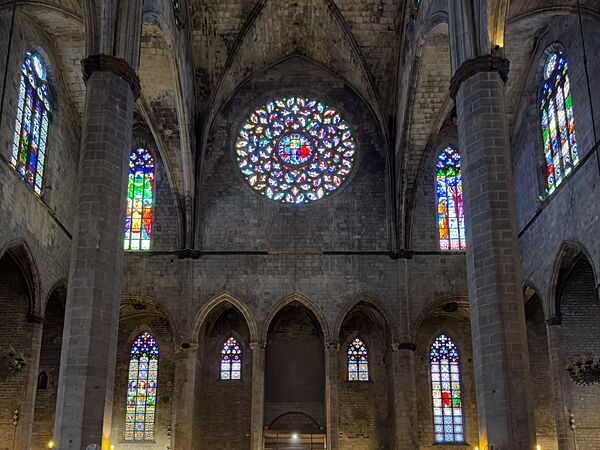Santa Maria del Mar, Barcelona facts for kids
Quick facts for kids Santa Maria del Mar |
|
|---|---|
| Basílica de Santa Maria del Mar | |
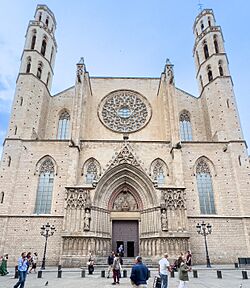
The west end of the church
|
|
| 41°23′01″N 2°10′55″E / 41.38361°N 2.18194°E | |
| Location | Barcelona |
| Country | Spain |
| Denomination | Roman Catholic |
| History | |
| Dedication | Saint Mary |
| Consecrated | 1384 |
| Architecture | |
| Heritage designation | Bien de Interés Cultural |
| Architectural type | Catalan Gothic |
| Years built | 1329–1384 |
| Administration | |
| Archdiocese | Barcelona |
Santa Maria del Mar is a beautiful old church in the Ribera area of Barcelona, Catalonia, Spain. Its name means "Saint Mary of the Sea." This church was built a long time ago, between 1329 and 1383. It is a great example of Catalan Gothic style, which is a type of architecture from that time. What makes it special is how pure and unified its design is, which is rare for such a large medieval building.
Contents
History of the Church
Early Beginnings
People first mentioned a church called Santa Maria by the Sea way back in 998. The idea to build the church we see today came from a church leader named Bernat Llull. He became the Archdean of Santa Maria in 1324.
Building the Church
One cool thing about Santa Maria del Mar is that regular people supported its building. Unlike many churches built by rich nobles, this one was backed by the common folk. Construction started on March 25, 1329. King Alfonso IV of Aragon even helped lay the first stone! You can still see a special stone tablet on the church wall that remembers this day.
The main architects were Berenguer de Montagut and Ramon Despuig. Many local workers and guilds from the Ribera neighborhood helped build it. By 1350, the main walls, chapels, and outside parts were finished.
Challenges and Completion
In 1379, a fire damaged parts of the church. But the builders kept going! Finally, on November 3, 1383, the very last stone was put in place. The church was officially opened on August 15, 1384.
Earthquake and Repairs
In 1428, a big earthquake hit Catalonia. It caused some deaths and destroyed the beautiful round window (called a rose window) at the front of the church. A new rose window was finished by 1459, and its colorful glass was added a year later. Later, in the 1800s, a new chapel was added next to the main altar.
Damage and Restoration
Sadly, in 1936, during a time of conflict in Spain, a fire damaged many of the church's decorations. Many old images and a large altar were destroyed. The church burned for 11 days but survived!
Repairs started in 1938. It took a long time to replace the damaged windows, with many not being fixed until the 1960s. Money for repairs was hard to find. So, a fundraising campaign began. Futbol Club Barcelona, the famous soccer team, was asked to help. They agreed, but only if their team's symbol could be put on one of the new stained-glass windows.
Outside the Church
From the outside, Santa Maria del Mar looks very strong and solid. It's surrounded by narrow streets in the Ribera area, so it's hard to see the whole church at once. You can get a good view from the Fossar de les Moreres and the Plaça de Santa Maria, which used to be old burial grounds.
The front of the church, facing the Plaça de Santa Maria, has a large rose window. Statues of Saint Peter and Saint Paul stand on either side of the main door. Above the door, a carving shows Jesus with Mary and Saint John. The tower on the northwest side was finished in 1496. The other tower wasn't completed until 1902!
Inside the Church
Light and Space
When you step inside Santa Maria del Mar, it feels very different from the outside. It's full of light and feels very spacious! The church has three main sections, called aisles, that form one big open space. There are no walls or big arches separating the main part of the church from the area around the altar.
The simple arched ceiling is held up by tall, thin, eight-sided columns. Lots of daylight streams in through the tall windows high up on the walls.
Decorations and Windows
After the fire in 1936, much of the church's original art and decorations were lost. This is why the inside looks simpler compared to other big Gothic churches in Barcelona. One important piece that was destroyed was a large altar from the Baroque period.
However, some beautiful stained-glass windows from different time periods have survived. These windows add splashes of color to the light-filled interior.
Unique Design
The columns inside Santa Maria del Mar are spaced very far apart. In fact, they are the widest apart of any Gothic church in Europe! This wide spacing helps create the feeling of openness and space inside.
How it was Measured
Experts believe that the builders of Santa Maria del Mar used a special measurement called the "medieval foot," which was about 33 centimeters (or about 13 inches). Using this measurement, the small chapels on the sides are 10 feet deep. The side aisles are twice that, at 20 feet wide. The main central aisle is four times as wide, at 40 feet. This means the total width of the church is 100 medieval feet. Interestingly, the church's highest point is also 100 medieval feet tall!
Images for kids
See also
 In Spanish: Basílica de Santa María del Mar para niños
In Spanish: Basílica de Santa María del Mar para niños


